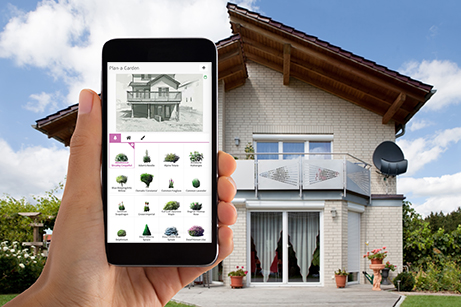
by A Touch of Dutch Landscaping | Sep 2, 2020 | Landscape Design
When renovating your yard sometimes the hardest step is the first one – knowing where to begin. Maybe you have a few ideas in mind but don’t know how to bring them together. Or perhaps you have no ideas and need inspiration. Either way, we’ve assembled a few suggestions to help you gather your thoughts and assemble a plan.
There are quite a few online tools and apps that can help you visualize your newly renovated yard before a shovel breaks ground. Below are a couple of apps we have selected as well as a couple social platforms where you can find inspiration.
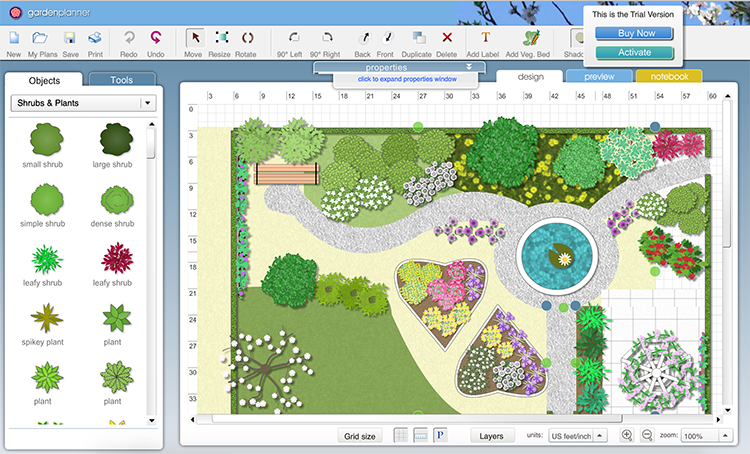 Features and Benefits of this platform:
Features and Benefits of this platform:
- Easy to use – drag-and-drop
- Available for Mac and Windows platforms
- Printable designs
- Notes section
- Library of over 1200 plants and objects
- Includes ability to design edible gardens
- Free trial version + paid version
- Paid version includes 3D capabilities
- Available online demo
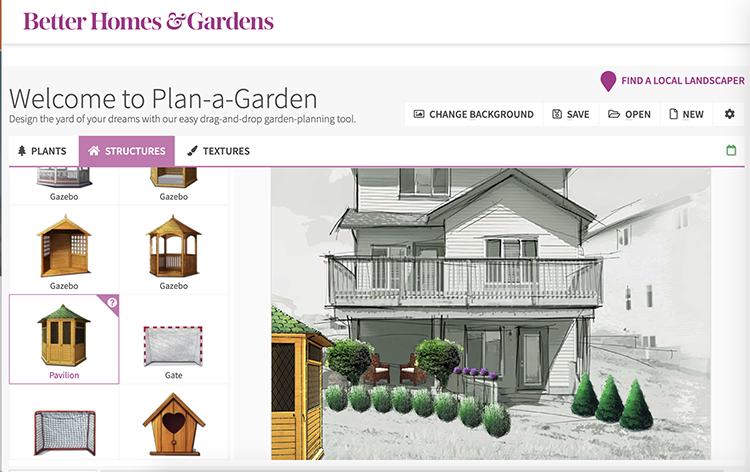 Features and Benefits of this platform:
Features and Benefits of this platform:
- Choose from generic home styles as the backdrop for your design, or upload a picture(s) of your home/yard.
- Select from an extensive range of plants, trees, and shrubs.
- See specific plant details to ensure they meet your criteria for inclusion in your design.
- Filter search by plant type, size, light exposure, and spoil conditions.
- Plants are scaled to reflect actual relative size depending on their placement in your design.
- Drag and drop function allows you to easily move elements around your design.
- Add architectural elements and patio furniture to complement your softscape elements.
- Add hardscaping (walkways, patios, fencing, etc.) and even paint to the design and elements.
- Toggle between seasons to see what your design will look like at various times of the year.
In addition, the following visual social media platforms can provide a heap of inspiration when planning landscaping enhancements.
 This highly searchable, and widely used platform will provide inspiration from all over the world. So, whether your budget is big or small, and your style is traditional or contemporary, you will find examples from all over the world.
This highly searchable, and widely used platform will provide inspiration from all over the world. So, whether your budget is big or small, and your style is traditional or contemporary, you will find examples from all over the world.
We continue to create thematic pin boards every month. Recently, we’ve added Pool Area Landscaping, Improve Curb Appeal with Landscaping, Hardscaping Inspiration, and of course, Windmills. One of the features we like most about Pinterest is the ability to create a private pin board exclusively for our client’s use, so they can communicate ideas with us.
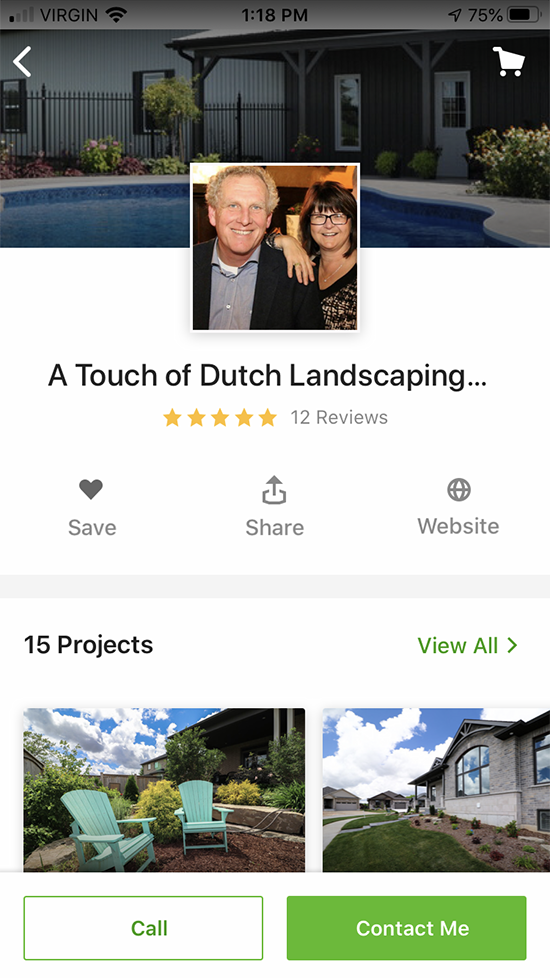 Houzz is an industry-specific platform specifically for businesses in home design, construction, repair, and restoration. On this site, you can find lots of great local inspiration. We share projects and idea books that help our customers better understand our wide range of expertise and completed projects, as well as related details including budget range for each project.
Houzz is an industry-specific platform specifically for businesses in home design, construction, repair, and restoration. On this site, you can find lots of great local inspiration. We share projects and idea books that help our customers better understand our wide range of expertise and completed projects, as well as related details including budget range for each project.
Starting with a plan – general or specific – can help you feel more comfortable when engaging the services of a landscaper. It will provide a solid foundation for discussion about the project and will make the whole process more efficient, ensuring you and your contractor get on the same page quickly. We hope you find these tools useful when you begin a landscaping project. As always, we invite you to contact us to get the ball rolling.
Professional Landscape Designs by
A Touch of Dutch Landscaping
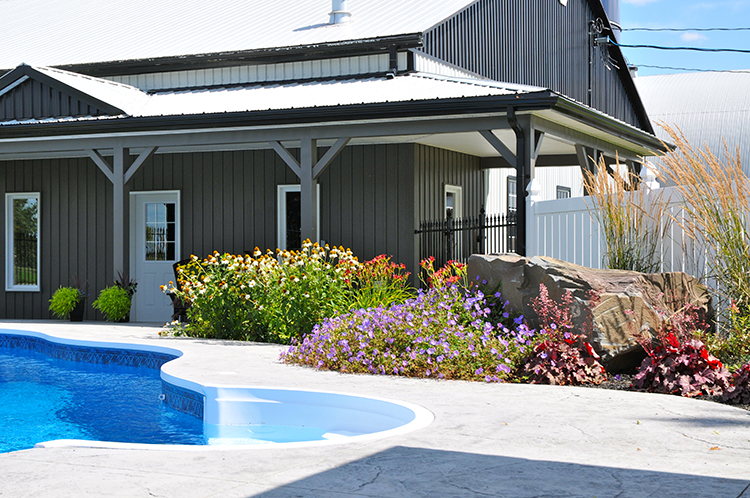
by A Touch of Dutch Landscaping | Jul 29, 2020 | Hardscaping, Landscape Design, Retaining Walls, Softscaping, Trees, Walkways, Water Features
Enjoy living in your backyard, not just swimming in your pool
When adding a pool to your backyard, the actual installation of the pool is only half the job. The other half is comprised of what goes around the pool to give your backyard oasis polish and make the area more livable.
Enter landscaping. Both softscaping (trees, shrubs, and flowerbeds) and hardscaping (decking, fences, patios, walkways, and retaining walls) can turn your new pool space into a backyard oasis. The key is adding the right elements that will fit your style, lifestyle, and budget.
To streamline your planning process, consider your vision, then how you want the space around your pool to function, and finally of course, your budget.
Vision
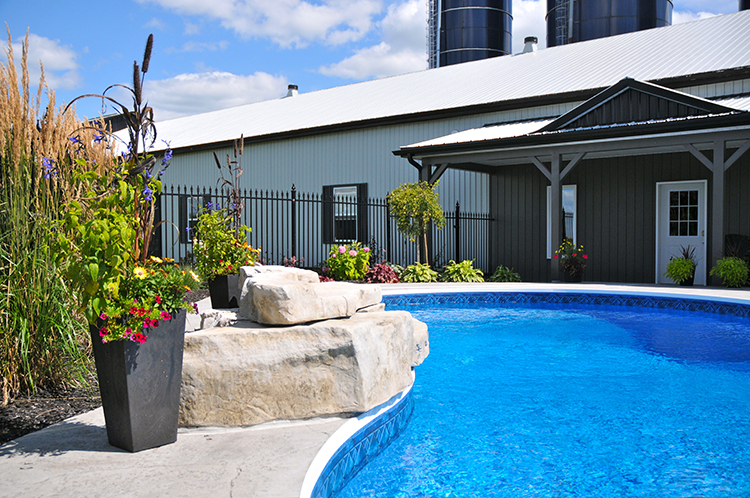 This is your invitation to have a big “blue sky” session. Include others who will also be using the finished space and note all wants and needs. Pinterest is a great tool for curating your vision in a private vision board that you can share with your landscaping professional.
This is your invitation to have a big “blue sky” session. Include others who will also be using the finished space and note all wants and needs. Pinterest is a great tool for curating your vision in a private vision board that you can share with your landscaping professional.
This is not the time to stifle creativity with practical matters. Browse through images of other backyard pool areas and gather inspiration. If something looks too big, too complex, or too fancy, keep in mind that elements that you like can be scaled down, simplified, or otherwise altered to meet your needs and budget during later planning stages.
Right now, just allow yourself to think big and think of possibilities.
Function
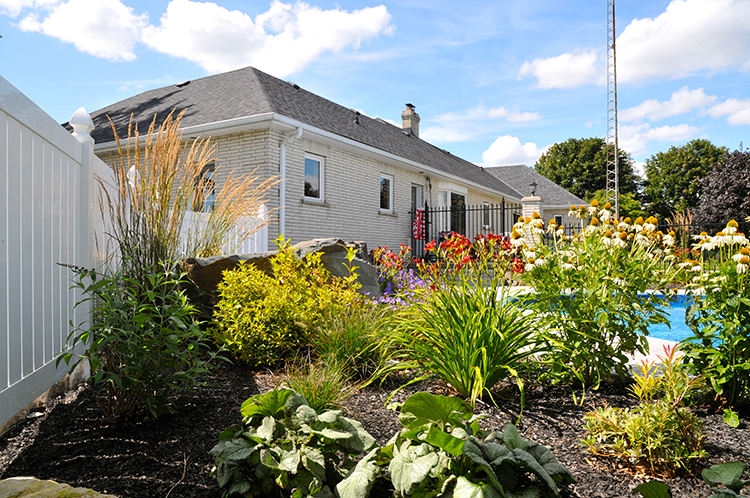 This step incorporates more practicality into your plan. Take some time to think about how you will be using your finished backyard. Talk to other pool owners about the things they love most about their yard and perhaps what they would have done differently if they could do it again.
This step incorporates more practicality into your plan. Take some time to think about how you will be using your finished backyard. Talk to other pool owners about the things they love most about their yard and perhaps what they would have done differently if they could do it again.
Consider maintenance required for trees, shrubs, and gardens. Do you need shade? Do you want more colour? Do you want fast-growing plants and trees or would you prefer softscaping whose shape and size is easy to maintain?
Do you want a large patio for lounging with family and friends? Do you want additional privacy? What about lighting for nighttime use? And you’ll likely need storage for pool and patio furniture and accessories. When we meet with clients, we address all of these things, but many people like to conduct their own due diligence beforehand.
Budget
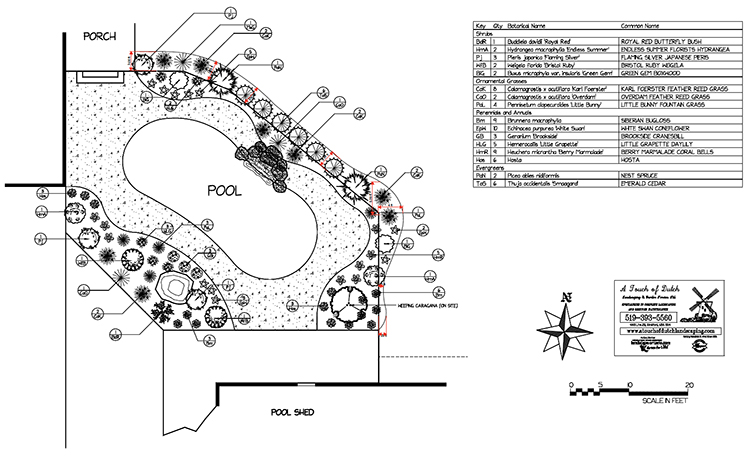 From modest to unlimited, we work with all kinds of budgets. And we’ll be happy to work within yours while showing you how to maximize the return on your investment without compromising your entire vision.
From modest to unlimited, we work with all kinds of budgets. And we’ll be happy to work within yours while showing you how to maximize the return on your investment without compromising your entire vision.
Like most other landscaping projects, converting your backyard pool installation into a full backyard oasis can be accomplished in phases. So, if your current budget doesn’t allow for everything on your wish list, consider breaking the project into steps, adding your wish list elements over two or more years. We can help you establish priorities based on budget and short- versus long-term needs, and then create a plan accordingly.
A backyard pool project is exciting. However, if you want to spend your summers in your backyard, but not always in your pool, how you landscape and furnish the space around the pool is as important as the pool itself.
We love working with clients to make their backyard dreams a reality and are happy to work with you at your pace to bring your dreams to life. Contact us for assistance at any stage of the process.
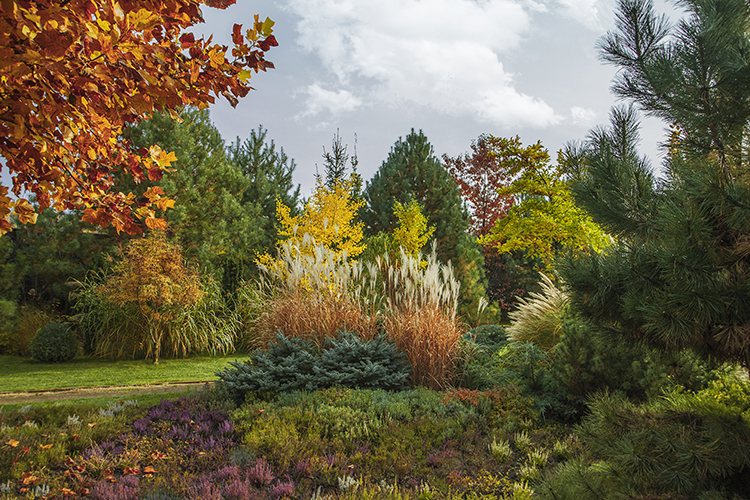
by A Touch of Dutch Landscaping | Sep 28, 2019 | Flowers, Foliage, Gardening, Landscape Design, Shrubs, Trees
Most of us would be hard pressed to find a person who doesn’t love the colours of fall. Yes, winter will inevitably follow fall, and probably earlier than we’d like. But, in the meantime, we’ve still got warm daytime temperatures, cool evenings, and so much colour to enjoy.
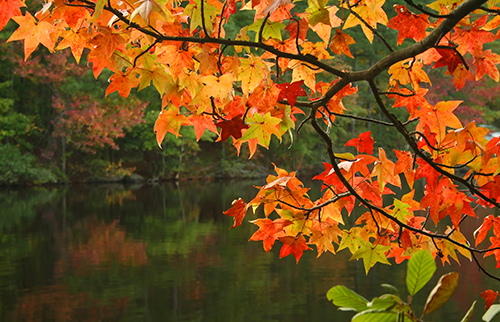 While the trees, plants, and shrubs throughout Southwestern Ontario offer up a lot of colour, many homeowners want colour in their own yards, as well. There are some quick fixes for this – displaying pumpkins, potted mums, and faux leaves and floral décor, for example. However, adding perennial colour to your fall garden takes a bit more forethought.
While the trees, plants, and shrubs throughout Southwestern Ontario offer up a lot of colour, many homeowners want colour in their own yards, as well. There are some quick fixes for this – displaying pumpkins, potted mums, and faux leaves and floral décor, for example. However, adding perennial colour to your fall garden takes a bit more forethought.
When planning gardens, home gardeners generally work in chronological order, considering what’s going to bloom or otherwise be at its peak in spring and then what will be at its best in summer. For this reason, autumn may tend to take a backseat where plant selection is concerned. To prolong the enjoyment of your gardens though, you may want to make room for a few fall favourites in your yard.
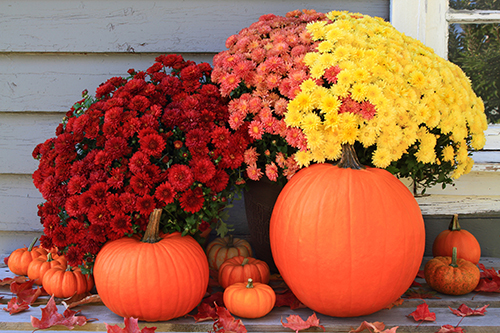 Plant retailers and nurseries might be among your best resources for determining what’s at its colourful peak right now. They tend to sell what’s in season, when it’s in season. And the warm, sunny days, cool nights, and more regular precipitation of early fall can be the perfect time to plant, offering ideal conditions for new plants, trees, and shrubs to take root before the first frost.
Plant retailers and nurseries might be among your best resources for determining what’s at its colourful peak right now. They tend to sell what’s in season, when it’s in season. And the warm, sunny days, cool nights, and more regular precipitation of early fall can be the perfect time to plant, offering ideal conditions for new plants, trees, and shrubs to take root before the first frost.
A few selections that fare well in our region in the fall include:
- Burning Bush (Euonymus alatas) – normally green deciduous foliage turns vibrant red
- Wayfaring Tree (Vibunum Lantana)
- Sugar Maple (Acer Saccharum) – foliage turns orange and red
- Mountain Ash (Sorbus) – foliage turns orange, red, and yellow
- Witch Hazel (Hamamelis) – foliage turns bright yellow
- Butterfly Bush (Buddleia) – flowers in fall, showing purple, blue, pink, and white
- Chrysanthemum (C. x morifolium) – fall flowers in yellow, orange, purple, red, burgundy, white, and bronze
- Purple Coneflower (Echinacea Purpurea) – large purple flowers and prominent seed heads
- Coralbells (Heuchera) – flowers throughout the season, leaves can show purple/bronze
- Rosemallow (Hibiscus Moscheutos) – large, saucer-like blooms are pink, blue, or purple
- Sedum Autumn Joy (Sedum spectabile) – flower clusters are generally pink or light purple
- Goldenrod (Solidago spp.) – bright yellow, flower clusters
Keep in mind though, that your plants and trees need a bit of TLC in order to get established before the first frost. Otherwise your investment of time and money may be for naught. If you’re not getting ample rainfall, you should water new plants thoroughly and consistently to help roots get established before the ground freezes. And ensure you get everything into the ground before the snow flies, as plants will have a much better chance of surviving the winter there than in the thin, plastic pots in which they’re generally sold.
 Once plants are in the ground, most of the initial growth is going to take place below the soil, which is good. So, don’t be disappointed if you see much going on above ground. Your patience will be rewarded with healthy, showy plants next year. To help things along and protect vulnerable young root systems, add a thick layer (4 inches) of mulch around plants. Mulch will add much needed insulation to keep heat in and cold out.
Once plants are in the ground, most of the initial growth is going to take place below the soil, which is good. So, don’t be disappointed if you see much going on above ground. Your patience will be rewarded with healthy, showy plants next year. To help things along and protect vulnerable young root systems, add a thick layer (4 inches) of mulch around plants. Mulch will add much needed insulation to keep heat in and cold out.
Although fall is a great time for planting, there are some exceptions. Evergreens need more time to adjust and build up stores of moisture. If not, they may dry out over the winter when the ground is hard and water supply is cut off. Also, some plants and shrubs sustain a bit of damage throughout the winter. A newly planted specimen may not be sufficiently established to handle the first winter, and may not make it through.
And finally, if you’re wanting to press your luck by planting something that is not ideally suited to your hardiness zone (Southwestern Ontario ranges anywhere from Zone 5 to 7), it will have a much better chance of surviving our winters if planted in spring and given a full growing season to acclimate.
Although many homeowners will start putting their gardens to bed for the year, plants are still growing and thriving in the early to mid-fall conditions. Take advantage of this time to change up your gardens, adding splashes of fall colour not just for this year, but for years to come.
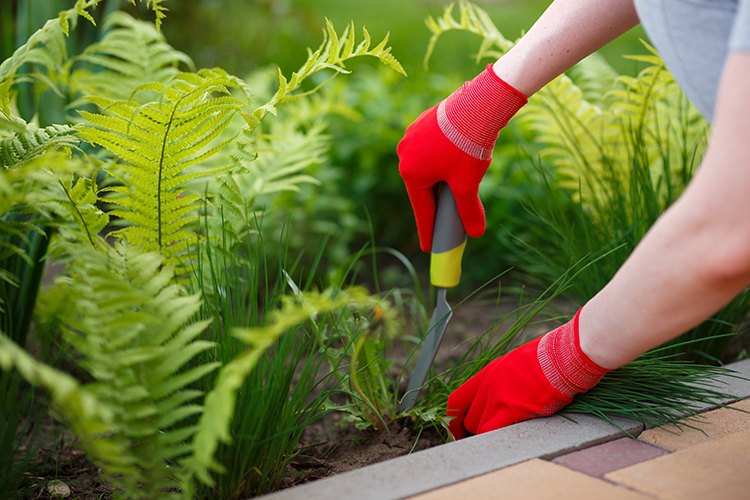
by A Touch of Dutch Landscaping | Aug 29, 2019 | Flowers, Foliage, Landscape Design, Maintenance, Softscaping
Where weeds come from
There are several classifications and definitions of weeds. However, in the very simplest terms, a weed is an unwanted plant in your lawn or garden.
No plant that’s perceived as a weed today has always been a weed. Once upon a time, they lived in a benign location and had no notable negative impact on their surroundings.
The turning point – when a plant becomes a weed – is when it invades a space where it is not desired and/or has an undesirable impact on people, animals, or other vegetation.
So, if they weren’t there to start with, how did those weeds get into your yard? They were carried there – transported by vehicle, animal, or on the wind.
And many seeds don’t need a whole lot of TLC to germinate. As long as they have oxygen and water, and a bit of sunlight, they will grow. So, the big question:
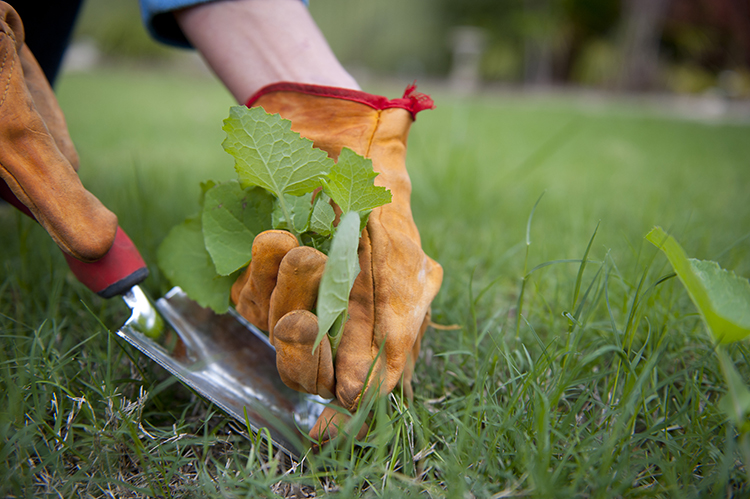
How to control weeds
Let’s face it – weed avoidance is not a thing. However, there are strategies that will help you tame the beast and minimize the negative impact of weeds.
- Cut off their food supply
As mentioned above, weeds need water, oxygen, and sunlight. So water only desired plants and plant closely together. Weeds don’t tend to grow as prolifically under other plants. The less exposed area you have in your gardens, the fewer weeds you will have to pull.
- Don’t disturb the soil.
When adding new plants or removing weeds from your lawn and garden, closely target the soil or weed in question. Weed seeds are generally present throughout your soil, so turning the soil brings new seeds closer to the surface, giving them the opportunity to germinate.
- Mulch is your friend.
Keep exposed soil covered with a thick (about 4 inches) layer of good quality mulch. This deprives weed seeds of sunlight, helping to keep them at bay. Some prefer crushed stone or river rock. These work as well. Just be sure to add a base layer of landscaping fabric over the surface before adding the rock. Keep in mind though that new seeds that are deposited from animals or the wind will germinate, so see the next tip.
- Weed early and often.
The sooner you pluck weeds out, the easier removal will be and the less damage they will do. If you give weeds a chance to take root, they’ll develop stronger, deeper roots systems at one end and seed heads (which will distribute more seeds) at the other. The best time to weed is after a good rain, when the ground is soft and roots will release more easily.
Weeds in your lawn and garden are the bane of any homeowner’s existence. But, armed with the information above, you’ll have a better understanding of where they’re coming from and how to control them.
Ready, set, weed!
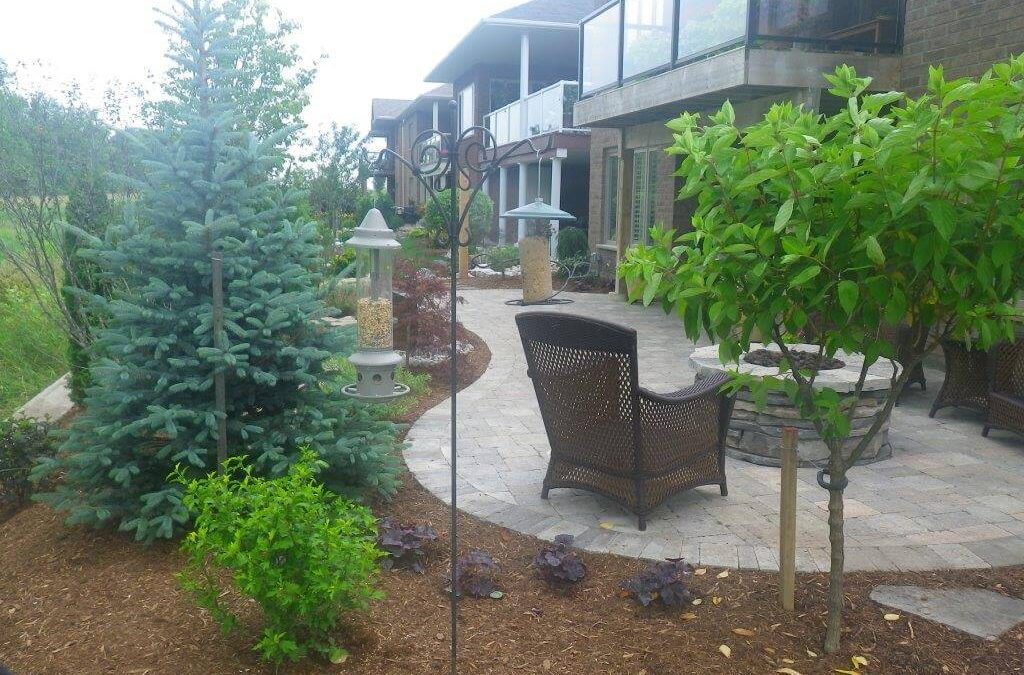
by A Touch of Dutch Landscaping | Jul 18, 2019 | Hardscaping, Landscape Design, Lawn care, Maintenance, Native Plants, Walkways
What to expect with low-maintenance landscaping
When we’re consulting with clients about their goals for new landscaping projects, by far the most requested characteristic is “low-maintenance”. But keep in mind that “low-maintenance” doesn’t mean “no maintenance”, so there’s still some work involved in keeping your lawn and garden looking great all season long.
If you’re looking to minimize the amount of work your lawn and flowerbeds need, we’ve got some tips that will allow you to spend more time enjoying your outdoor living spaces and less time maintaining them.
The Low-Maintenance Lawn
It may surprise you to learn that your lawn generally requires a lot more time to maintain that gardens do. Weeding, feeding, seeding, sodding, cutting, trimming, and watering all repeatedly require time, effort, and resources.
As such, the first thing we recommend doing is considering how much lawn you need for your lifestyle. While grass-covered turf does offer certain environmental benefits like absorbing toxins and carbon dioxide, other landscaping options can be just as beneficial. Chances are you can drastically reduce the amount of grass in your yard and replace those areas with other, much lower-maintenance elements.
One sure-fire way to reduce high-maintenance grass is to add some hardscaping to your yard. In addition to your driveway, porch, and deck, you might consider expanding your living space with a stone patio, fire pit area, and/or walkways. Adding crushed stone and pavers to high-traffic areas can significantly reduce maintenance while improving draining and weed control.
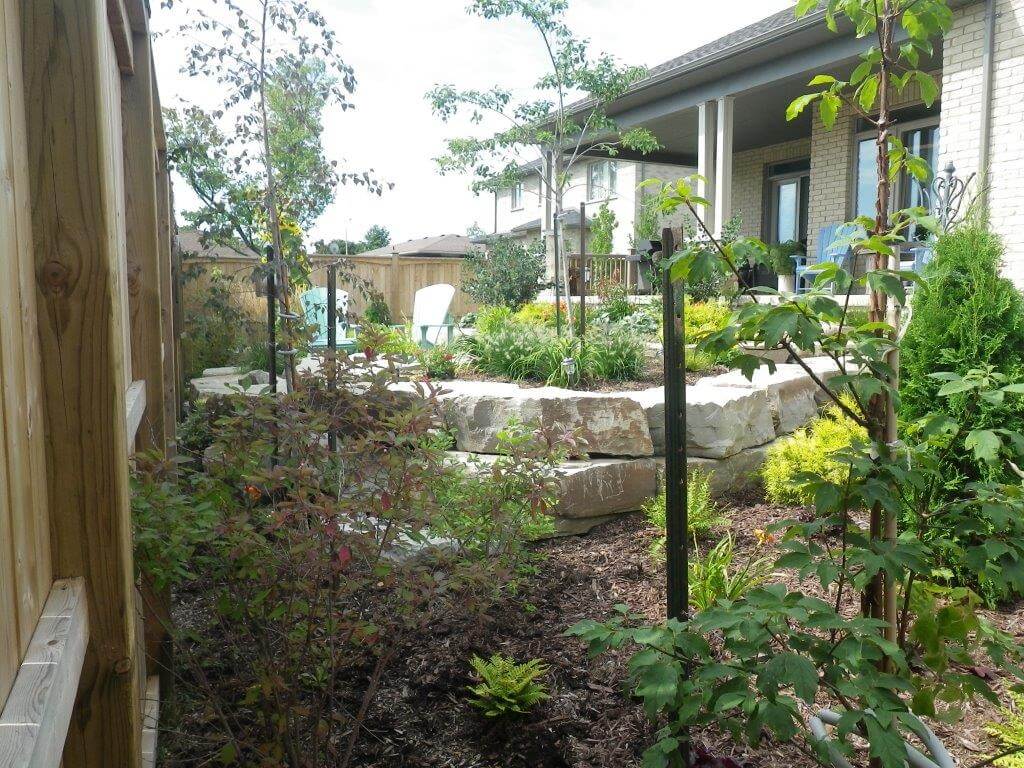
Trees
Large trees may require some maintenance in the form of trimming and/or raking leaves, but they offer many aesthetic and environmental benefits.
If you plan to add trees, give them a wide skirt of exposed earth (out to the drip line) and mulch well. This not only looks good, but furthers the reduction of grass that would otherwise need to be maintained.
Plant Selection
We’re fortunate to have myriad options when it comes to plants, flowers, and shrubs. However, if your goal is low-maintenance landscaping, you’ll want to be selective.
First and foremost, you can ensure the lowest maintenance gardens by choosing plants that are native to your region. These plants thrive in your region’s climate and soils, and historically have grown in the wild with no one but Mother Nature maintaining them. So you can bet they’ll thrive in your garden without too much attention.
Favour perennials over annuals. While the latter tend to be showier, they require more maintenance (deadheading and watering) and need to be replaced every year, adding both time and expense to your gardening requirements. To add pops of colour to your porch and patio but keep maintenance manageable, plant annuals in large containers.

It’s important to consider sun exposure when selecting plants – both annuals and perennials – for gardens and planters. Shade-loving plants will become scorched in anything other than morning sunlight. Sun-lovers planted in the shade will not reach their full potential and will get “leggy” reaching for the sun.
While it’s visually appealing to choose a variety of shapes, sizes, and textures, be sure to select plants for your garden that have similar needs. This will help you avoid having to care for plants individually, permitting you instead to apply what maintenance is required to all plants in your garden.
Beautiful plants come from healthy soil. Soils that are rich in nutrients with good drainage and low competition from weeds will foster healthy plants without much assistance.
Good quality compost adds a wide range of nutrients and healthy bacteria to soil, and can also ensure appropriate drainage. Peat moss can also improve drainage but has an acidic pH. Raised beds also drain better than those dug down into the ground. Finally, a thick layer of mulch will help reduce watering requirements and minimize weed growth. Topped up every spring, mulch also feeds the soil and adds a polished look to flower beds and gardens.
Here in Southwestern Ontario, our outdoor living season is short, so maximize enjoyment by minimizing your work. Consider where you spend the bulk of your time and effort outside and determine ways to reduce or eliminate it so you can spend more time basking in our summer weather, while it lasts.
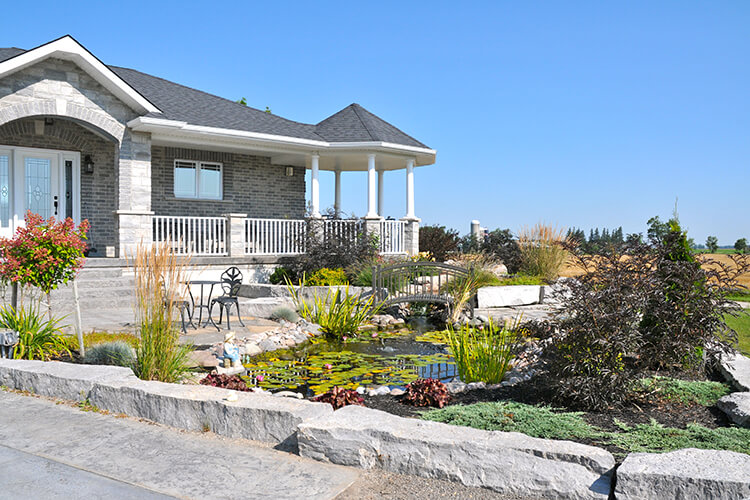
by A Touch of Dutch Landscaping | Jun 23, 2019 | Fencing, Hardscaping, Landscape Design, Ponds, Retaining Walls, Walkways, Water Features
Enhance the comfort and beauty of your yard with hardscaping
Hardscaping is probably not a term you use very often, but it’s actually a common facet of landscaping. In fact, you probably have some hardscaping elements in your yard.
The “hard” in hardscaping refers to the non-living or inanimate elements in a yard’s layout. In contrast, “softscaping” includes all living matter including plants and flowers, trees and shrubs, plus soil, mulch, and of course grass.
Natural stone, wood, gravel, concrete (precast and pour-in-place), interlocking brick, and composite are the most common hard materials used in the creation of fencing, retaining walls, waterfalls, ponds, patios, pathways, and more.
Standard inclusions in virtually any property are walkways, a driveway, decking, and fencing. However, many home owners opt to upgrade at some point, either to add new features to their existing landscape or simply to update outdated elements.
So how do you decide what features to add or change and which materials to use? When we consult with our clients, we consider several variables including specific goals, personal style, the style of the home and surroundings, and budget.
One of the primary goals that hardscaping can help address is added privacy. You can achieve this by adding a fence line or panels, a wall(s) or even just creating a privacy screen on one or both sides of your deck or patio. To soften the overall appearance, consider combining hardscaping elements with tall shrubs or ornamental grasses that can also enhance privacy.
Another common goal is expanding outdoor living space. Options here are dependent on available space and budget, and can range from a small deck to a multi-tiered patio with an entertainment area, bar, built-in kitchen, pool, pond, waterfall, and/or fire table with seating.
Natural stone retaining walls are a great solution for adding depth and visual interest, or dealing with a steeply graded yard or uneven grading around the perimeter. Armour stone is a popular choice for creating retaining walls as they are large, but natural and create visual impact.
Pathways to and around your home can add visual appeal and can also create visual separation and definition of gardens. Although poured concrete is the standard for walkways between the driveway and front entrance, explore other options like flagstone, interlocking brick, decorative pavers, or even materials generally relegated to the backyard like wood or composite.
If there are areas around your home where grass doesn’t thrive due to inadequate drainage or poor sun exposure, adding gravel and stepping stones can improve the appearance while also making navigation around those areas easier.
A couple caveats before you get started
- Even if you plan to add hardscaping in phases – say, the patio first, and then a pond and retaining walls over the next couple years – it’s best to create the whole plan at the outset so that you can be sure everything will work together when the entire project is completed. Short-term oversights can lead to long-term headaches.
- Think about drainage and environmental issues when adding immovable objects like a patio or a wall. Consider incorporating a means of collecting runoff water for use around your yard.
- Balance is best. You can create contrast with various sizes and shapes. Use two to three different complementary materials in your project. And most importantly, don’t overdo it with hard elements in your yard. Mix hardscaping with softscaping for best results.
- Ensure your design is appropriate for your lifestyle. If you have young children, maintaining an open, grassy area is probably a good idea. If you’re older and want a low-maintenance yard, you might opt for more hardscaping and drought-tolerant plants.
- Choose the right materials for your style. Whether your taste is modern, traditional, or somewhere in between, some materials are going to suit your style better than others, so choose carefully.
Hardscaping can add so much beauty to your yard and enjoyment to your outdoor living space. Just be sure to plan ahead for best results. Of course, sometimes it’s all just too daunting. A Touch of Dutch Landscaping and Garden Services can consult with you to create and implement a plan and design that meets your needs and fits your budget. Contact us to get started.

 Features and Benefits of this platform:
Features and Benefits of this platform: Features and Benefits of this platform:
Features and Benefits of this platform: This highly searchable, and widely used platform will provide inspiration from all over the world. So, whether your budget is big or small, and your style is traditional or contemporary, you will find examples from all over the world.
This highly searchable, and widely used platform will provide inspiration from all over the world. So, whether your budget is big or small, and your style is traditional or contemporary, you will find examples from all over the world. Houzz is an industry-specific platform specifically for businesses in home design, construction, repair, and restoration. On this site, you can find lots of great local inspiration. We share projects and idea books that help our customers better understand our wide range of expertise and completed projects, as well as related details including budget range for each project.
Houzz is an industry-specific platform specifically for businesses in home design, construction, repair, and restoration. On this site, you can find lots of great local inspiration. We share projects and idea books that help our customers better understand our wide range of expertise and completed projects, as well as related details including budget range for each project.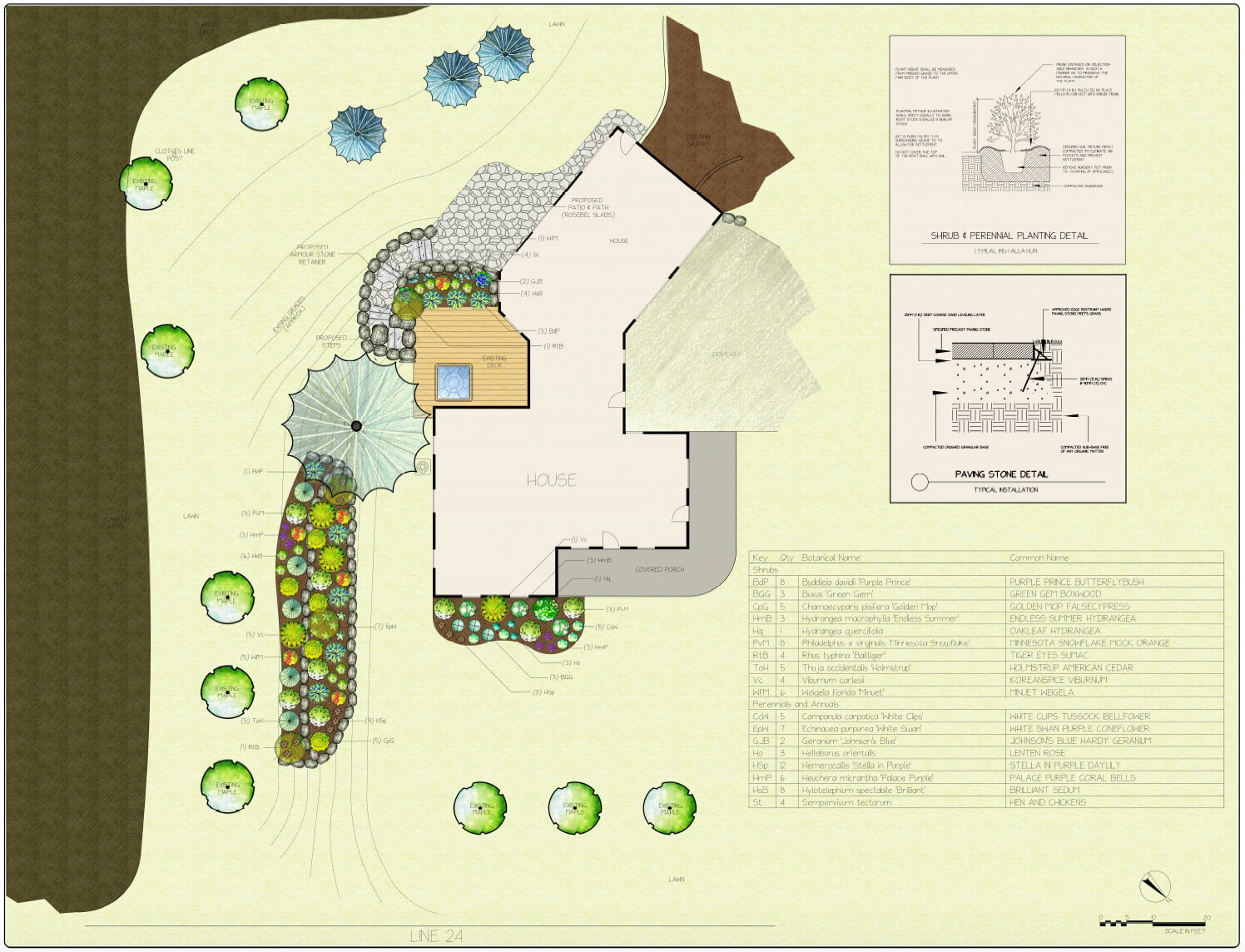
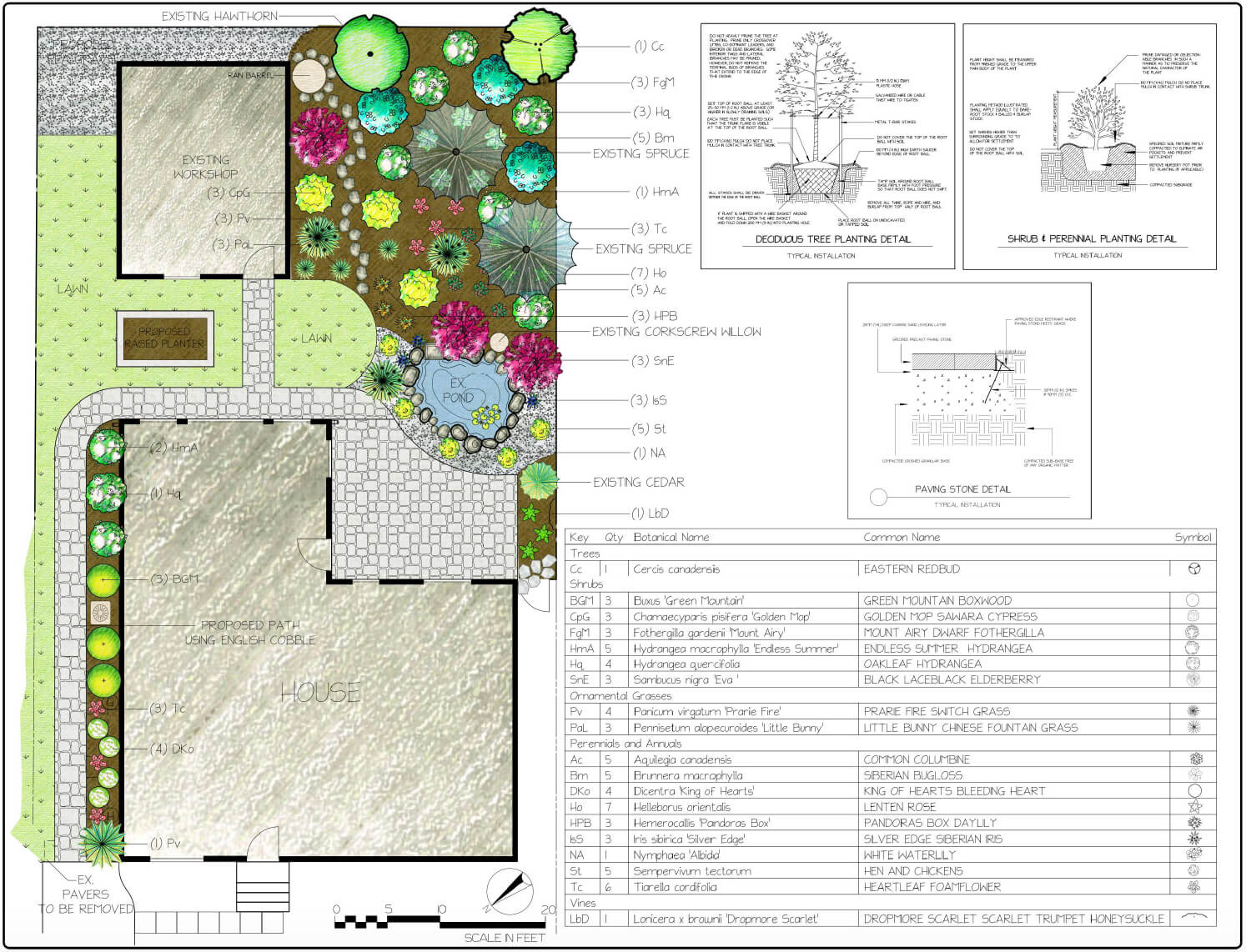
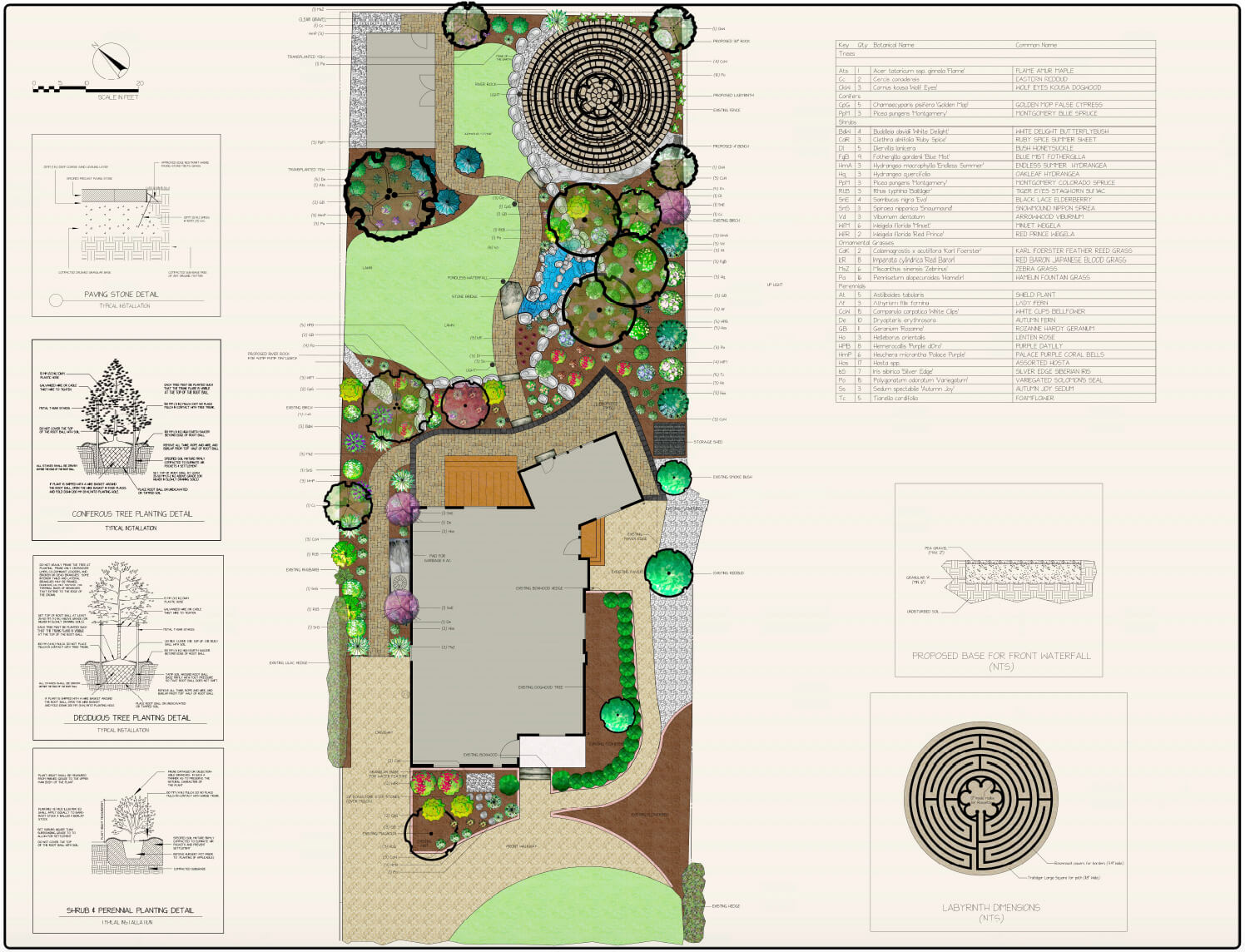


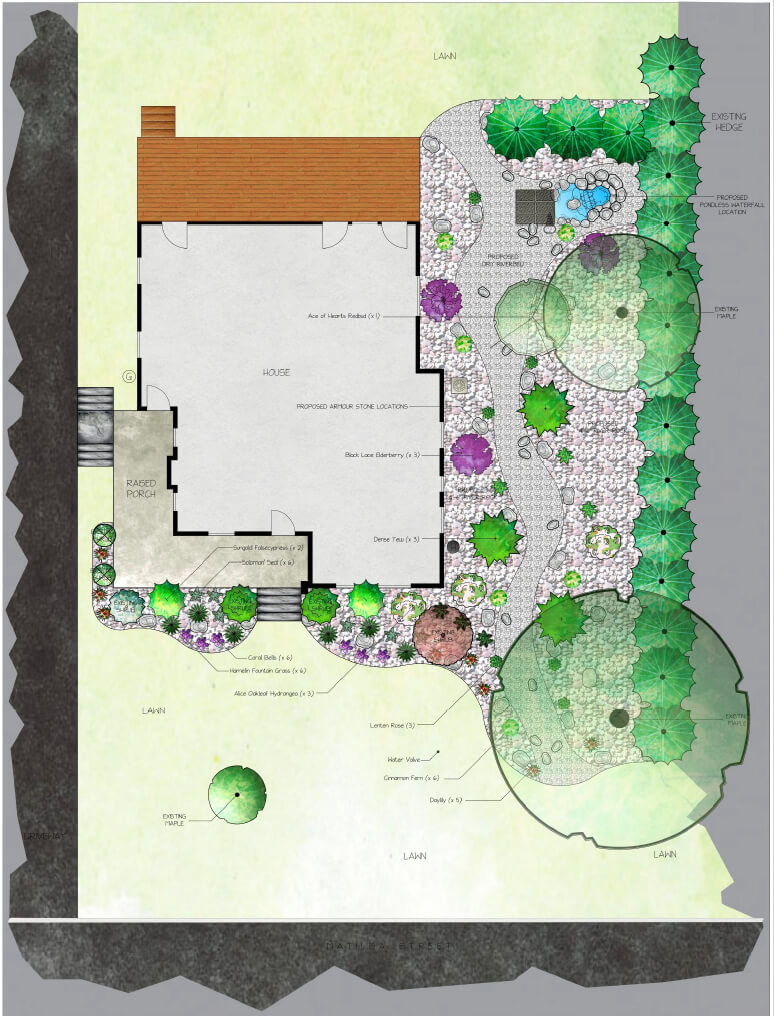


 This is your invitation to have a big “blue sky” session. Include others who will also be using the finished space and note all wants and needs.
This is your invitation to have a big “blue sky” session. Include others who will also be using the finished space and note all wants and needs.  This step incorporates more practicality into your plan. Take some time to think about how you will be using your finished backyard. Talk to other pool owners about the things they love most about their yard and perhaps what they would have done differently if they could do it again.
This step incorporates more practicality into your plan. Take some time to think about how you will be using your finished backyard. Talk to other pool owners about the things they love most about their yard and perhaps what they would have done differently if they could do it again. From modest to unlimited, we work with all kinds of budgets. And we’ll be happy to work within yours while showing you how to maximize the return on your investment without compromising your entire vision.
From modest to unlimited, we work with all kinds of budgets. And we’ll be happy to work within yours while showing you how to maximize the return on your investment without compromising your entire vision.
 While the trees, plants, and shrubs throughout Southwestern Ontario offer up a lot of colour, many homeowners want colour in their own yards, as well. There are some quick fixes for this – displaying pumpkins, potted mums, and faux leaves and floral décor, for example. However, adding perennial colour to your fall garden takes a bit more forethought.
While the trees, plants, and shrubs throughout Southwestern Ontario offer up a lot of colour, many homeowners want colour in their own yards, as well. There are some quick fixes for this – displaying pumpkins, potted mums, and faux leaves and floral décor, for example. However, adding perennial colour to your fall garden takes a bit more forethought. Plant retailers and nurseries might be among your best resources for determining what’s at its colourful peak right now. They tend to sell what’s in season, when it’s in season. And the warm, sunny days, cool nights, and more regular precipitation of early fall can be the perfect time to plant, offering ideal conditions for new plants, trees, and shrubs to take root before the first frost.
Plant retailers and nurseries might be among your best resources for determining what’s at its colourful peak right now. They tend to sell what’s in season, when it’s in season. And the warm, sunny days, cool nights, and more regular precipitation of early fall can be the perfect time to plant, offering ideal conditions for new plants, trees, and shrubs to take root before the first frost. Once plants are in the ground, most of the initial growth is going to take place below the soil, which is good. So, don’t be disappointed if you see much going on above ground. Your patience will be rewarded with healthy, showy plants next year. To help things along and protect vulnerable young root systems, add a thick layer (4 inches) of mulch around plants. Mulch will add much needed insulation to keep heat in and cold out.
Once plants are in the ground, most of the initial growth is going to take place below the soil, which is good. So, don’t be disappointed if you see much going on above ground. Your patience will be rewarded with healthy, showy plants next year. To help things along and protect vulnerable young root systems, add a thick layer (4 inches) of mulch around plants. Mulch will add much needed insulation to keep heat in and cold out.




